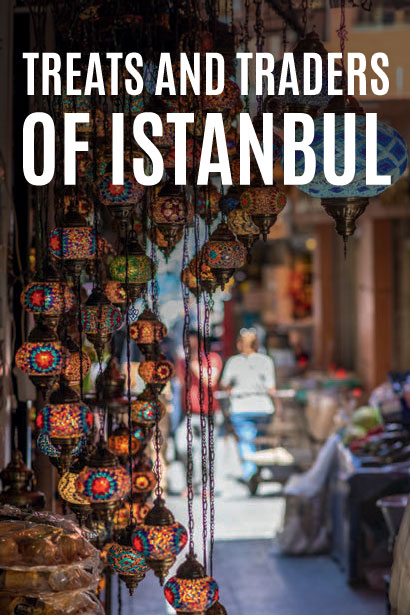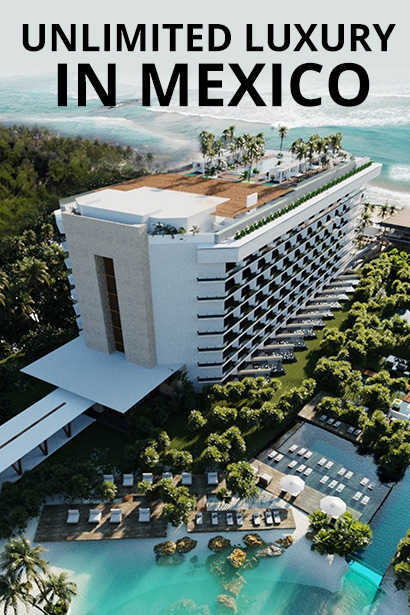

A Day in the Life Sampling Istanbul’s Flavors
SELECT & REPLACE WITH ANOTHER TEMPLATE

Turkish coffee is the perfect way to start your day exploring the city.
As I explore the passageways under the embellished arches of the 17th-century Egyptian — or Spice — Bazaar, and walk past stalls piled high with plump olives and pyramids of vibrant spices, I’m enveloped in the heady aroma of cumin, cardamom and cinnamon.
But it’s in the streets around the market where the best bargains are to be had, and that’s where I go in search of pomegranate syrup — perfect for adding a sweet-and-sour tang to salad dressings — and Iranian saffron, the spice once worth more than gold.
I get my caffeine hit standing with the locals at Kurukahveci Mehmet Efendi, a purveyor of rich Turkish coffee since 1871, finely ground and still brewed in copper pots. And I buy my breakfast from an elderly man weaving through the crowds with a tray laden with simit — a round, bagel-like bread — balanced precariously on his head. As I bite into its crunchy, toasted-sesame-coated shell, I discover a soft, sweet and savory interior.
SELECT & REPLACE WITH ANOTHER TEMPLATE

The Blue Mosque is an awe-inspiring sight.
By turns the capital of the Roman Empire, the center of Byzantium and Ottoman Constantinople — and the only city to span two continents — Istanbul’s been attracting visitors for centuries. It's crowded, chaotic and creative, a sensory overload of sights, sounds and smells, and where Europe meets Asia, not only geographically but culturally. And it’s all reflected in its eclectic cuisine, from sleek restaurants to street food.
My journey begins in Sultanahmet, the city’s historical heart and the showcase of its Ottoman and Byzantine roots. Some of its most quintessential sights are here — the Blue Mosque, Hagia Sophia, Basilica Cistern and Topkapi Palace — displaying Turkey’s finest decorative arts in their dazzling tilework, carved cedar and vibrant stained glass.
The city’s also an age-old hub for trade. The Grand Bazaar, close to the Egyptian Bazaar, was built in 1461, and is said to be the world’s oldest and largest covered market, a labyrinth of more than 4,000 shops selling everything from glittering gold to exotic ointments and richly embroidered kaftans.
There are sweet treats, too — jumbles of pastel-colored lokum, better known as Turkish delight. But I’m told to buy it from a city institution, Haci Bekir, a short walk away.
The wooden-front shop is emblazoned with the name of the founder, Ali Muhiddin Haci Bekir, who started the company in 1777. It’s still run by the sixth generation of the same family, and inside it retains its Old-World charm, with glass cabinets filled with decorative lokum boxes and a counter lined with brass-lidded jars brimming with tempting candies.
They produce around 30 types of lokum — there’s even a new sugar-free line. I sample sugar-dusted yet tangy orange, creamy vanilla and a two-in-one mint-and-lemon flavor, before settling on a classic — a box of fragrant, rosewater-flavored morsels.
SELECT & REPLACE WITH ANOTHER TEMPLATE

The Galata Bridge plays a central role to life in the city.
From the busy waterfront at Eminönü, I cross the Galata Bridge, which spans the Golden Horn, the body of water that separates old and new Istanbul. Fishermen stand shoulder-to-shoulder along the bridge and, behind me, I can still hear the guttural cries of “balik ekmek” — literally “fish and bread” — from the fishing boats tied to the quay. Hungry commuters often grab a fish sandwich to go, grilled mackerel topped with lettuce, onion, red cabbage, parsley and a squeeze of lemon, before they ferry-hop home along the European and Asian shores.
Dating back to the time of the region’s nomadic tribes, street food is deep-rooted in Turkish culture and it can still see you through a day’s sightseeing. I’d already tried oval-shaped pide — a Turkish take on pizza — but wanted to try lahmacun, a round, wafer-thin flatbread topped with a mixture of ground lamb, red peppers, tomatoes and onion, flavored with garlic, paprika and chiles.
Across the bridge in Karaköy, I drop into a cupboard-sized, no-name restaurant, order, and within minutes the lahmacun’s in my hands, piping hot from the oven. I give it a sprinkling of fresh parsley and a squirt of lemon juice and eat it rolled like a burrito, washed down with a glass of yogurt-based, salty and sour ayran.
There are also dozens of types of kebabs and, after a long night, convivial Istanbullus often refuel with a classic doner — the meat, traditionally lamb or beef, cooked and expertly shaved off a vertical rotisserie — from a hole-in-the-wall joint. Or the more elaborate iskender, aka the king of Turkish kebabs, where meat is served over cubes of flatbread cooked in a rich tomato sauce and then smothered in garlicky yogurt.
The city has just as many types of restaurants: a meyhane usually serves mezze — tapas-style hot and cold dishes, while a traditional lokanta is a no-frills affair serving fresh, home-style cooking. Now there’s a new generation of homegrown chefs taking the dishes their grandmothers made and giving them a contemporary twist.
SELECT & REPLACE WITH ANOTHER TEMPLATE

Traditional turkish food is a symphony for the senses.
That evening, I head to Beyoglu’s Yeni Lokanta, which translates as “new restaurant,” a buzzy bistro with local touches, such as Iznik-style tiles. Chef-owner Civan Er sources seasonal ingredients from all over the country, such as blue cheese from Konya, olive oil from Marmaris and sour pomegranate from Antakya.
Among the menu standouts are dried eggplant-stuffed manti — delicate dumplings traditionally made with lamb or beef — in a goat’s milk yogurt sauce; Er’s own recipe of lamb sausage that he has specially made in southeastern Turkey, served with burned yogurt from Denizli, sun-dried black grapes from Kilis and mulberry molasses; and a classic milk pudding, coated in crispy strands of deep-fried pastry.
Beyoglu was once known as Pera and nicknamed Little Europe for the many embassies that were housed in its ornate 19th-century buildings. After the founding of the Turkish Republic in 1923, the area’s mile-long central artery was re-named Istiklal Caddesi, or Independence Avenue.
The following morning, I join the crowds and dodge heritage trams along this vibrant thoroughfare, and discover a fascinating mix of old and new. International brands sit side-by-side with simit carts, a 15th-century marble hammam next to a sleek modern art gallery, and Istanbul’s oldest wine bars vie with contemporary cocktail lounges.
SELECT & REPLACE WITH ANOTHER TEMPLATE

The Pera Palace Hotel makes for a peaceful refuge from the bustling of Istanbul.
I escape the throng for a sedate afternoon tea in the opulent Kubbeli Saloon at the Pera Palace Hotel. Opened in 1892 to house the first passengers on the Orient Express, underneath the magnificent domed ceiling and glittering chandeliers, a table groans under the weight of enticing cakes from the hotel’s patisserie.
To the soundtrack of a tinkling piano, I imagine Greta Garbo lounging on a red velvet chaise longue, Agatha Christie plotting storylines over a cucumber sandwich, and Ernest Hemingway downing a whiskey or three in the Orient Bar.
That evening, I eat at one of the city’s most exclusive eateries, the award-winning Mikla perched on the top of the Marmara Pera Hotel and with panoramic city views.
Headed up by celebrity chef Mehmet Gürs — dubbed the Godfather of New Anatolian cuisine — his contemporary seven-course tasting menu (there’s also a three-course prix fixe) reflects his Turkish-Scandinavian roots.
The restaurant works with a food anthropologist to search out the finest ingredients and I feast on dishes such as tender octopus with zingy pomegranate vinegar; dried beef tenderloin with earthy isot chili; and flavorsome Ezine white cheese and buffalo yogurt with jammy molasses, all perfectly paired with unexpectedly good Turkish wine. As the setting sun bathes the city in a golden glow, I’m only distracted from my plate by the showstopping skyline of silhouetted domes and minarets.
I round off with a creative cocktail mixing twice-distilled raki — Turkey’s potent aniseed spirit — with gin, hibiscus and cranberry juice, while drinking in the views across the Bosphorus to the twinkling lights of Asia. No wonder they say go for the history, stay for the food.
Inspired to visit Istanbul for yourself? Trust one of our travel agents to help make it happen. Not only will you have plenty of time to experience the sights and flavors listed above, but you’ll also enjoy the perks of working with a certified industry professional — like reams of recommendations and exclusive perks and amenities from the leading brands in travel. Our agents know Istanbul well, so we can help you choose, plan and vacation to perfection.
SELECT & REPLACE WITH ANOTHER TEMPLATE



